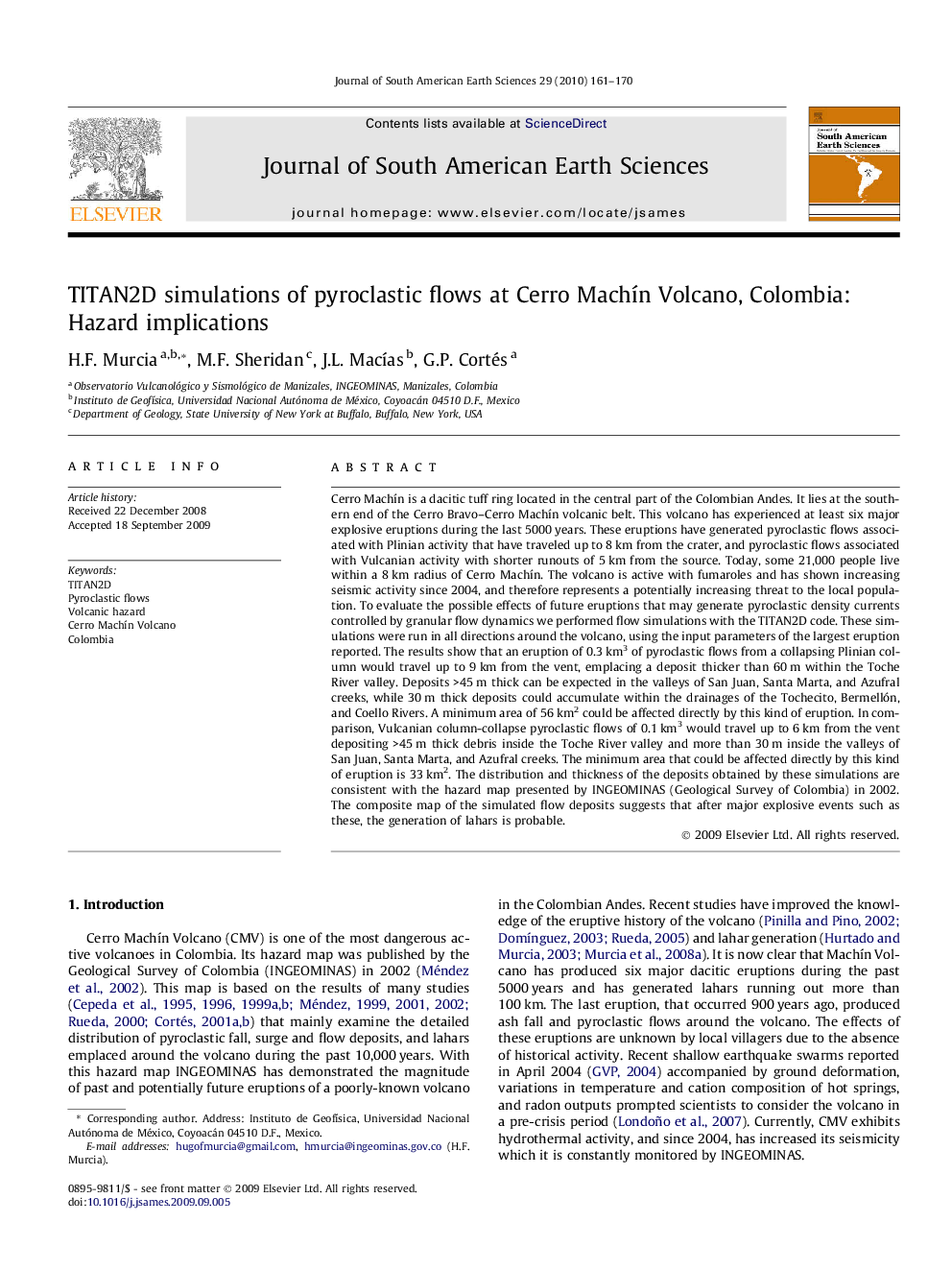| کد مقاله | کد نشریه | سال انتشار | مقاله انگلیسی | نسخه تمام متن |
|---|---|---|---|---|
| 4682673 | 1348935 | 2010 | 10 صفحه PDF | دانلود رایگان |

Cerro Machín is a dacitic tuff ring located in the central part of the Colombian Andes. It lies at the southern end of the Cerro Bravo–Cerro Machín volcanic belt. This volcano has experienced at least six major explosive eruptions during the last 5000 years. These eruptions have generated pyroclastic flows associated with Plinian activity that have traveled up to 8 km from the crater, and pyroclastic flows associated with Vulcanian activity with shorter runouts of 5 km from the source. Today, some 21,000 people live within a 8 km radius of Cerro Machín. The volcano is active with fumaroles and has shown increasing seismic activity since 2004, and therefore represents a potentially increasing threat to the local population. To evaluate the possible effects of future eruptions that may generate pyroclastic density currents controlled by granular flow dynamics we performed flow simulations with the TITAN2D code. These simulations were run in all directions around the volcano, using the input parameters of the largest eruption reported. The results show that an eruption of 0.3 km3 of pyroclastic flows from a collapsing Plinian column would travel up to 9 km from the vent, emplacing a deposit thicker than 60 m within the Toche River valley. Deposits >45 m thick can be expected in the valleys of San Juan, Santa Marta, and Azufral creeks, while 30 m thick deposits could accumulate within the drainages of the Tochecito, Bermellón, and Coello Rivers. A minimum area of 56 km2 could be affected directly by this kind of eruption. In comparison, Vulcanian column-collapse pyroclastic flows of 0.1 km3 would travel up to 6 km from the vent depositing >45 m thick debris inside the Toche River valley and more than 30 m inside the valleys of San Juan, Santa Marta, and Azufral creeks. The minimum area that could be affected directly by this kind of eruption is 33 km2. The distribution and thickness of the deposits obtained by these simulations are consistent with the hazard map presented by INGEOMINAS (Geological Survey of Colombia) in 2002. The composite map of the simulated flow deposits suggests that after major explosive events such as these, the generation of lahars is probable.
Journal: Journal of South American Earth Sciences - Volume 29, Issue 2, March 2010, Pages 161–170